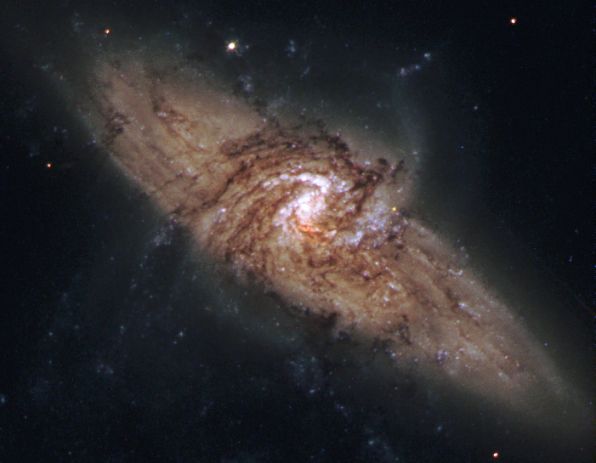Credit & Copyright: W. Keel and R. White,
(U. Alabama, Tuscaloosa),
Hubble Heritage Team
(STScI/
AURA),
NASA
Explanation:
Can this be a spiral galaxy?
In fact,
NGC 3314 consists of two large spiral
galaxies which just happen to almost exactly line-up.
The foreground spiral is viewed nearly face-on, its
pinwheel shape defined by young bright star clusters.
But against the glow of the background galaxy, dark swirling lanes of
interstellar dust are
also seen to echo the face-on spiral's structure.
The dust lanes are
surprisingly pervasive, and this remarkable
pair of
overlapping galaxies is one of a small number of systems in which
absorption of visible light can be used to directly explore the
distribution
of dust in distant spirals.
NGC 3314 is about 140 million light-years away in the southern
constellation of Hydra.
Just released, this color
composite was constructed
from Hubble Space Telescope images made in 1999 and 2000.
Authors & editors:
Robert Nemiroff
(MTU) &
Jerry Bonnell
(USRA)
NASA Web Site Statements, Warnings,
and Disclaimers
NASA Official: Jay Norris.
Specific
rights apply.
A service of:
LHEA at
NASA /
GSFC
& Michigan Tech. U.
Based on Astronomy Picture
Of the Day
